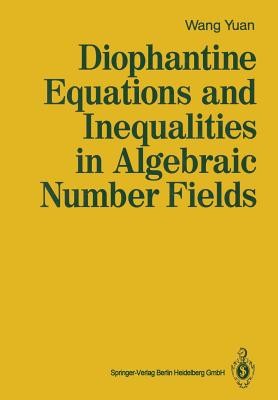
- We will send in 10–14 business days.
- SAVE -10% with code: EXTRA
Diophantine Equations and Inequalities in Algebraic Number Fields (e-book) (used book) | bookbook.eu
Reviews
Description
The circle method has its genesis in a paper of Hardy and Ramanujan (see [Hardy 1])in 1918concernedwiththepartitionfunction andtheproblemofrep- resenting numbers as sums ofsquares. Later, in a series of papers beginning in 1920entitled "some problems of'partitio numerorum''', Hardy and Littlewood (see [Hardy 1]) created and developed systematically a new analytic method, the circle method in additive number theory. The most famous problems in ad- ditive number theory, namely Waring's problem and Goldbach's problem, are treated in their papers. The circle method is also called the Hardy-Littlewood method. Waring's problem may be described as follows: For every integer k 2 2, there is a number s= s( k) such that every positive integer N is representable as (1) where Xi arenon-negative integers. This assertion wasfirst proved by Hilbert [1] in 1909. Using their powerful circle method, Hardy and Littlewood obtained a deeper result on Waring's problem. They established an asymptotic formula for rs(N), the number of representations of N in the form (1), namely k 1 provided that 8 2 (k - 2)2 - +5. Here
EXTRA 10 % discount with code: EXTRA
The promotion ends in 20d.10:59:26
The discount code is valid when purchasing from 10 €. Discounts do not stack.
- Author: Yuan Wang
- Publisher: Springer
- Year: 2012
- Pages: 170
- ISBN-10: 3642634893
- ISBN-13: 9783642634895
- Format: 17 x 24.4 x 1 cm, softcover
- Language: English English
The circle method has its genesis in a paper of Hardy and Ramanujan (see [Hardy 1])in 1918concernedwiththepartitionfunction andtheproblemofrep- resenting numbers as sums ofsquares. Later, in a series of papers beginning in 1920entitled "some problems of'partitio numerorum''', Hardy and Littlewood (see [Hardy 1]) created and developed systematically a new analytic method, the circle method in additive number theory. The most famous problems in ad- ditive number theory, namely Waring's problem and Goldbach's problem, are treated in their papers. The circle method is also called the Hardy-Littlewood method. Waring's problem may be described as follows: For every integer k 2 2, there is a number s= s( k) such that every positive integer N is representable as (1) where Xi arenon-negative integers. This assertion wasfirst proved by Hilbert [1] in 1909. Using their powerful circle method, Hardy and Littlewood obtained a deeper result on Waring's problem. They established an asymptotic formula for rs(N), the number of representations of N in the form (1), namely k 1 provided that 8 2 (k - 2)2 - +5. Here


Reviews